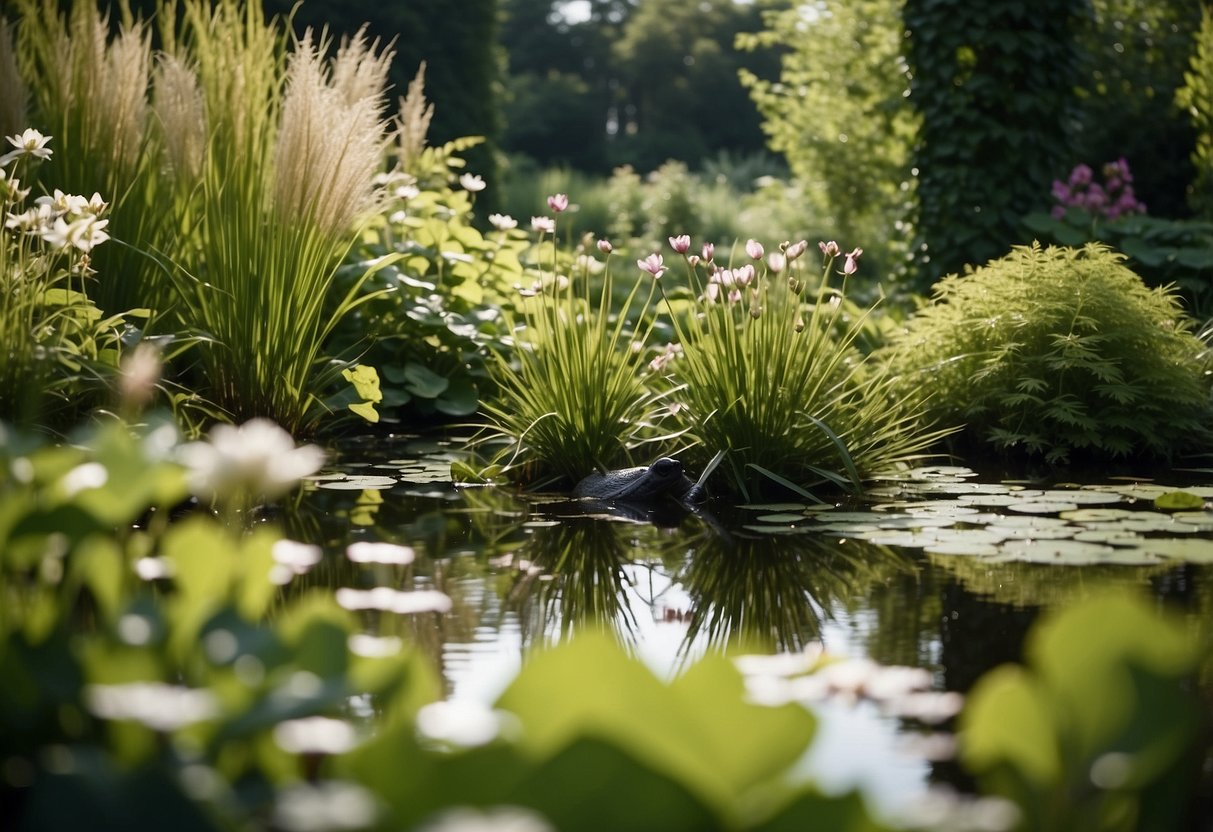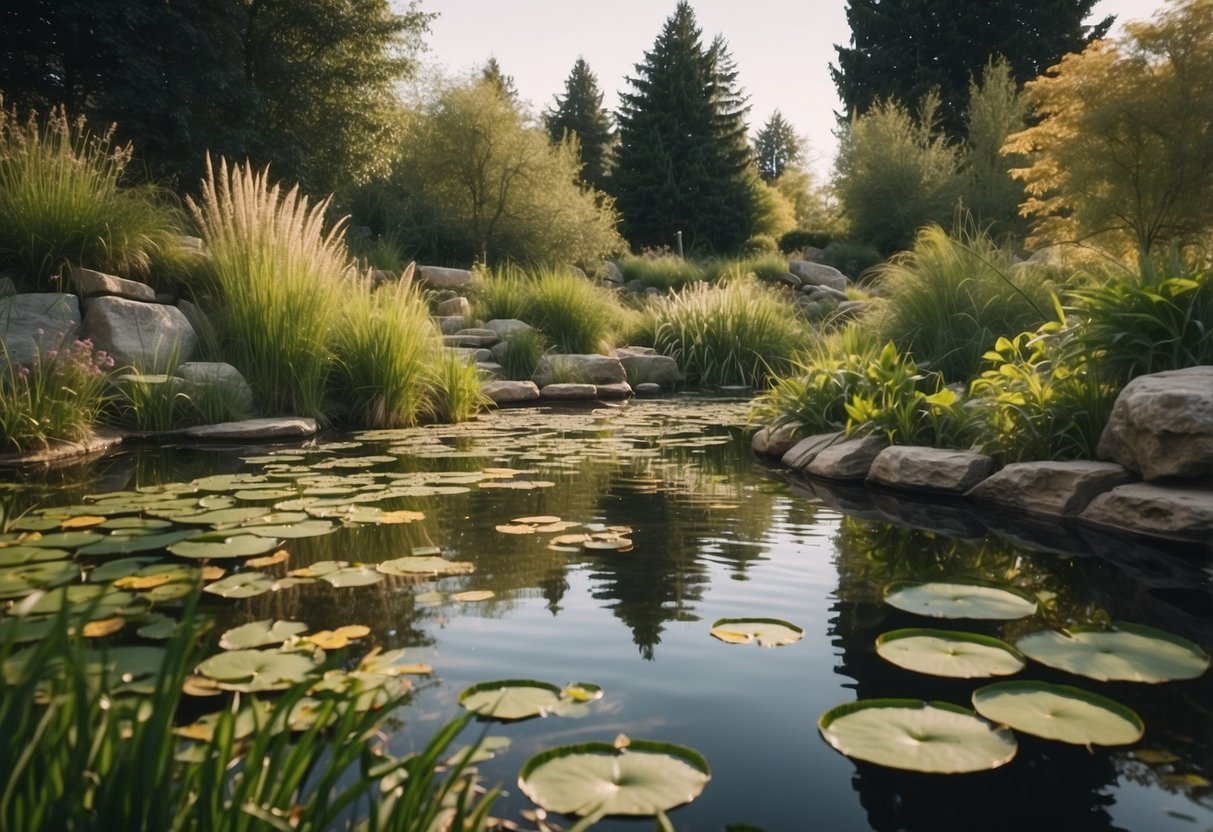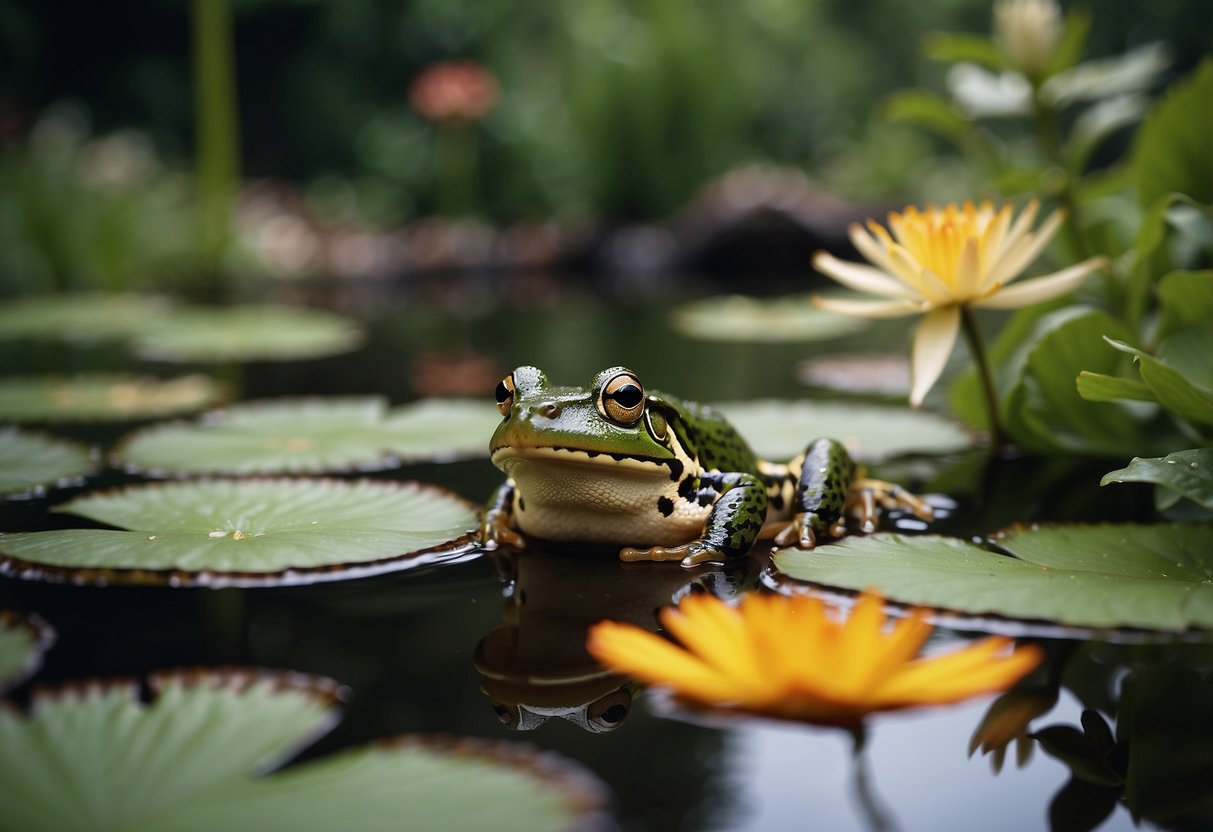What types of plants should I grow to attract frogs and toads?
Top amphibian-friendly garden choices
Frogs and toads are amazing garden helpers. They eat pests and add life to your yard. Certain plants can make your garden more frog-friendly.
Native water-loving plants like sedges, rushes, and reeds are great for attracting frogs and toads to your yard. These plants give frogs places to hide and lay eggs.

I also like to add some flowering plants that bring in insects. Frogs need bugs to eat, so more bugs means more frogs. Plants like native wildflowers work well for this. They look nice and help feed the frogs at the same time.
Don’t forget about trees and shrubs. Frogs need shade to stay cool and damp. I plant small trees or bushes near my frog areas. This gives them spots to rest during hot days.
Key Takeaways
- Water plants, flowering plants, and shade trees create ideal frog habitats
- Native plants attract more frogs and support local ecosystems
- Avoiding chemicals is key for a frog-friendly garden
Importance of Habitat for Amphibians
Frogs and toads need the right habitat to thrive. A good habitat gives them places to hide, find food, and lay eggs.
Water is key for amphibians. They need ponds, creeks, or wet areas to live and breed. Even a small pond can help.
Plants are vital too. They give shelter and attract insects for food. Native plants work best. They fit the local ecosystem.
I recommend avoiding chemicals in your garden. Pesticides and fertilizers can harm amphibians. Organic methods are safer.
Shelter is important for protection. Logs, rocks, and leaf piles make good hiding spots.
Here’s a quick list of habitat needs:
- Clean water source
- Native plants
- Chemical-free environment
- Hiding places
By providing these, I can create a welcoming space for frogs and toads. They’ll help control pests in return.
Remember, different species may have unique needs. It’s worth learning about local amphibians to tailor the habitat.
Types of Plants That Attract Frogs and Toads

I’ve found several plant types that can help attract frogs and toads to your garden. These include native plants, water-loving species, and those that provide good shelter.
Native Vegetation
Native plants are a great choice for attracting frogs and toads. I recommend planting hostas and ferns, which frogs love. These plants create a natural habitat that feels like home to local amphibians.
Native grasses and wildflowers are also excellent options. They attract insects, which serve as food for frogs and toads. I suggest including a variety of native species to create a diverse ecosystem.
Some native plants also provide natural hiding spots. Tall grasses and leafy plants give frogs places to rest and stay cool during hot days.
Water-Loving Plants
Frogs and toads need moisture, so water-loving plants are essential. I’ve learned that sedges are great for pond edges. They grow up to 3 feet tall and provide dense cover for frogs.
Water lilies are another top choice. They not only look beautiful but also attract insects that frogs eat. Plus, their large leaves give frogs a place to rest on the water’s surface.
I also recommend planting flag irises. These hardy plants thrive in wet areas and come in stunning blue-violet varieties. They create an ideal damp environment that frogs love.
Shelter-Providing Flora
Plants that offer shelter are crucial for attracting and keeping frogs in your garden. I suggest planting dense, low-growing shrubs near water sources. These create cool, shaded areas where frogs can hide.
Tall grasses are another great option. They provide cover and can help frogs stay hidden from predators. I recommend planting them in clumps around your garden.
Leafy plants with large foliage, like elephant ears, are also excellent. They create natural umbrellas for frogs to rest under during hot days. Place these plants near water features for the best results.
Remember to avoid using pesticides on these plants. Frogs are sensitive to chemicals and need a natural, healthy environment to thrive.
Designing Your Garden for Amphibians

To attract frogs and toads, I’ll show you how to create a welcoming garden habitat. I’ll cover making safe spaces, adding water features, and avoiding harmful chemicals.
Creating Microhabitats
I recommend making different areas in your garden for frogs and toads to live. They need spots to hide, rest, and hunt.
Pile up some rocks or logs in shady spots. This gives them cool places to rest during hot days.
Plant native shrubs and tall grasses. These provide cover and attract insects for food.
Leave some areas of your garden wild. Don’t mow all the grass short. Longer grass is great for amphibians to hide in.
Add a compost pile. It attracts insects and gives frogs a warm place in winter.
Safe Water Features
Frogs and toads need water to lay eggs and keep their skin moist. I suggest adding a small pond or water feature.
Make sure one side of the pond has a gentle slope. This lets amphibians easily get in and out.
Add some rocks or branches near the edge. These give frogs spots to sit and watch for food.
Plant some native water plants. They give places for frogs to hide and lay eggs.
Keep the water clean. Don’t use chemicals. Let nature balance the pond over time.
Avoiding Harmful Substances
I can’t stress enough how important it is to avoid chemicals in your garden. Amphibians have sensitive skin that soaks up toxins easily.
Don’t use pesticides or chemical fertilizers. These can harm or kill frogs and toads.
Use natural pest control methods instead. Encourage helpful insects and birds to your garden.
Be careful with weed killers. Many are toxic to amphibians. Pull weeds by hand when possible.
Avoid using slug pellets. These can poison frogs that eat the slugs.
Choose native plants for your garden. They often need less care and fewer added chemicals.
Maintaining the Amphibian-Friendly Environment

To keep frogs and toads happy in your garden, you need to manage pests safely and adapt to seasonal changes. I’ll explain how to do this without harming your amphibian friends.
Pest Management Strategies
I avoid using chemical pesticides in my frog-friendly garden. These can harm or kill amphibians. Instead, I use natural methods to control pests.
I plant native species that attract beneficial insects. These bugs eat the pests that damage my plants.
I also use physical barriers like row covers to protect my plants. Handpicking pests is another safe option.
If I must use a spray, I choose organic options like neem oil or insecticidal soap. I apply these carefully, avoiding areas where frogs hang out.
Seasonal Considerations
In spring, I create shallow, temporary pools for frog breeding. I fill these with rainwater or dechlorinated tap water.
During summer, I make sure there’s always fresh water available. I also provide shady spots to help frogs stay cool.
In fall, I leave some leaf litter on the ground. This gives frogs places to hide as they prepare for winter.
For winter, I create hibernation spots using native plants. Ferns and hostas work well for this. I also leave some logs or rocks in place as winter shelters.
Benefits of Attracting Frogs and Toads to Your Garden
Frogs and toads can be great helpers in my garden. They eat many pests that damage my plants, like slugs, snails, and insects. This natural pest control means I don’t need to use as many chemicals.
These amphibians also serve as indicators of environmental health. If I see frogs and toads thriving in my yard, I know my garden is likely in good shape.
Frogs and toads add a fun element to my outdoor space. I enjoy hearing their calls, especially on summer evenings. It makes my garden feel more alive and connected to nature.
Having these creatures around can be educational for kids. I can teach children about life cycles, habitats, and the importance of biodiversity right in my own backyard.
Frogs and toads play a role in the food web. They become food for other wildlife like birds and snakes, helping to support a diverse ecosystem in my garden.
By attracting frogs and toads, I’m also creating a haven for other beneficial creatures. The same features that draw amphibians often appeal to helpful insects and birds too.
Supporting Biodiversity Through Garden Choices
I recommend planting a variety of native species to support biodiversity in your garden.
Native plants are adapted to local conditions and provide food and shelter for local wildlife.
To attract frogs and toads, I suggest including water features like a small pond or rain garden.
These amphibians need water for breeding and staying hydrated.
Creating diverse habitats is key. I advise adding logs, rock piles, or preserving dead trees (snags) to provide shelter for various creatures.
Planting flowers that bloom at different times helps support pollinators year-round.
Some good options include:
- Lavender
- Coneflowers
- Black-eyed Susans
- Asters
These attract bees, butterflies, and other beneficial insects.
I also recommend reducing or eliminating pesticide use.
This protects beneficial insects and the animals that feed on them, including frogs and toads.
Frequently Asked Questions

Creating a frog-friendly garden involves choosing the right plants and features. I’ll address common questions about attracting these helpful amphibians to your yard.
What are the best plants to cultivate for creating a toad-friendly garden?
Hostas are excellent plants for toad-friendly gardens. Their large leaves provide shelter and shade.
Ferns also make great hiding spots for toads. I recommend planting them in shady, moist areas of your garden.
How can you establish a habitat that is conducive to attracting both toads and frogs?
To attract both toads and frogs, I suggest creating a diverse landscape.
Include a small pond or water feature for frogs. Then, add rocks, logs, and dense vegetation for shelter.
Toads prefer slightly drier areas, so include some mulched areas near shrubs.
What types of native vegetation can encourage the presence of frogs in my yard?
Native plants are ideal for attracting frogs. I recommend researching species that are local to your area.
Sedges are great options. They provide dense foliage for protection and help clean ponds.
Are there specific flowers or shrubs known to attract amphibians such as frogs and toads?
Yes, certain plants are particularly attractive to frogs and toads.
I’ve found that flag irises are popular among frogs.
These moisture-loving plants thrive in wet areas and produce beautiful flowers. Shrubs like azaleas and rhododendrons also provide good cover.
What should I consider when designing a frog-friendly ecosystem within a garden?
When designing a frog-friendly garden, I focus on creating a varied environment.
Include areas of sun and shade, a water source like a small pond, and native plants. Also, avoid using pesticides that could harm amphibians.
Which water features can support the needs of toads and frogs in a garden environment?
A shallow pond is ideal for frogs. I recommend including gently sloping sides for easy access.
Water lettuce is a great floating plant for frog ponds. It provides resting spots and shelter.
For toads, a shallow dish of water can suffice. Place it in a shaded area near dense vegetation.
